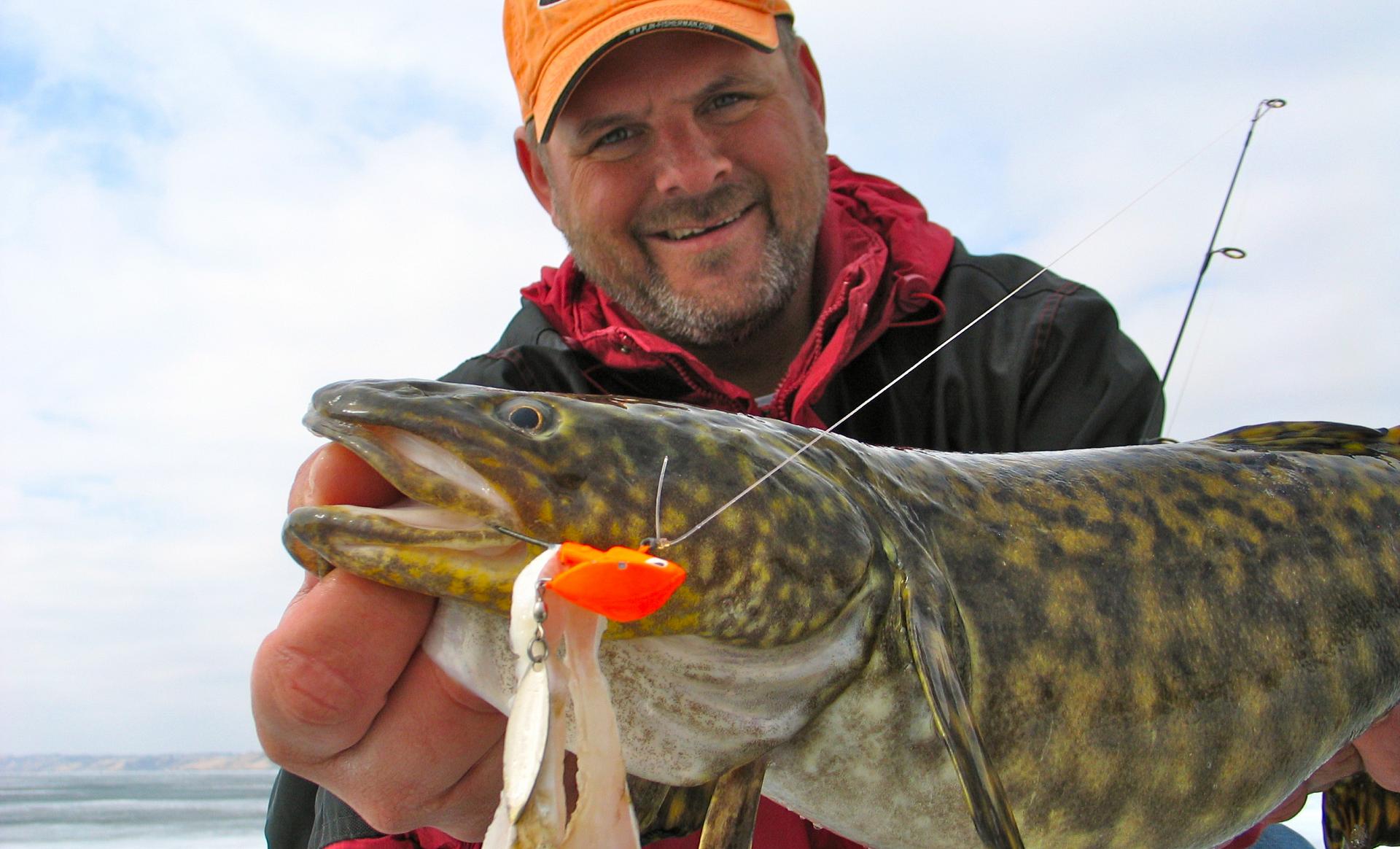The ling thing
An in-depth Q&A with burbot expert Jeff Matity
Advertisement
Lurking deep in our lakes is a voracious predator fish. It’s big, tough and plentiful, and it makes for fantastic eating. It’s known by many names across North America—freshwater ling, lingcod, eelpout, mariah and, officially, burbot—yet few anglers are aware of it. And of those who are, many either ignore this fish or look down their noses at it. That’s a shame, which is why it’s time to rehabilitate the reputation of the mighty, but oft-maligned, burbot.
Found in every province and territory except Nova Scotia and P.E.I., the burbot is the sole freshwater member of the cod family. And like its saltwater relatives, it possesses a face only a mama burbot could love. But that gnarly exterior masks a truly impressive gamefish.
Advertisement
I’ve caught my fair share of these interesting-looking critters over the years, but as with most ice anglers, the majority have been bonus incidental catches while ice fishing for walleye or lake trout. So for burbot advice, I interviewed my Fort Qu’Appelle, Saskatchewan, fishing buddy and expert burbot angler Jeff Matity of Matity’s Get Fishing.
For more information on Matity’s Get Fishing, as well as links to fishing videos (including one on burbot), check out www.matitysgetfishing.com.
GORD: What is it about burbot that you find so fascinating?
JEFF: Burbot are big, there are lots of them and the species has a tremendous character and life history. And they bite like crazy during the doldrums of February—a time when most other species get lockjaw. Burbot are also as fine on the table as any freshwater fish. They’ve been marketed for decades as cod for traditional fish-and-chips. GORD: What’s your biggest burbot, and how many do you catch on a good day?
Advertisement
JEFF: When we’re on an aggressive group, it’s like catching perch, except perch don’t fight for several minutes! When the majority of fish are just beginning to spawn, and we’ve got the bite patterned, catching 50 burbot is a reasonable expectation. My personal best was 40 inches long, and about 15 pounds.
GORD: What’s your biggest burbot, and how many do you catch on a good day?
Advertisement
JEFF: When we’re on an aggressive group, it’s like catching perch, except perch don’t fight for several minutes! When the majority of fish are just beginning to spawn, and we’ve got the bite patterned, catching 50 burbot is a reasonable expectation. My personal best was 40 inches long, and about 15 pounds.
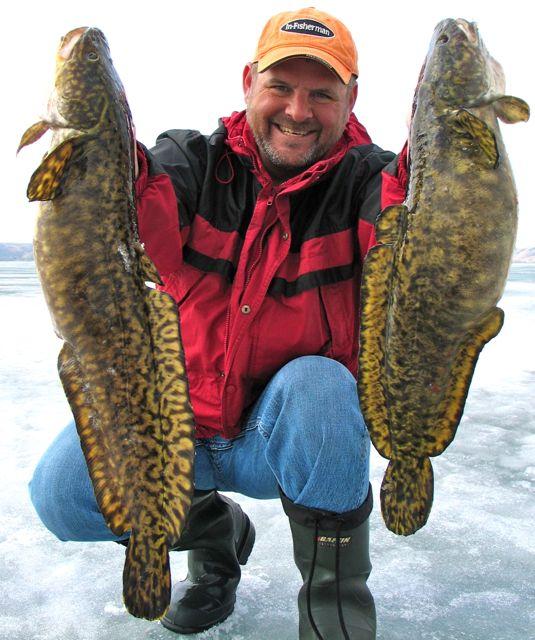
JEFF: You need to understand the burbot ice-fishing season is made up of specific periods: first ice, mid-winter and last ice. At first ice, the fall ciscoe spawn and post-spawn dispersal offers burbot the chance to feed on ciscoes, their eggs and the scavengers that share that bounty—namely suckers, shiners, crawfish and perch.
The best locations are deep, rocky main-lake points, as well as the first major drop-offs near current areas—they’re often dangerous at this time of year, so take care. Your best burbot bite will come out of the deepest holes where, you also often find first-ice walleye. The burbot usually start biting after the walleye quit for the night. However, tip-ups will produce daytime burbot if you set them just beyond the deepest holes.
Mid-winter finds burbot widely distributed throughout the lake basin, making them harder to pattern. Still, two solid patterns for this period are deep rock structures and current areas. Fish these spots early and late in the day—as well as at night—to find the fish’s travel routes and the spot-on-the-spot features. And once you find these areas, use your GPS to mark them because they’ll produce year after year.
Late-ice finds groups of burbot in all three stages of the spawn. Burbot are one of the few fish that spawn under the ice, and they’ll be using shallow main-lake rock and gravel flats, close to deep-water foraging areas. On a contour map, I look for the biggest main-lake feeding flats that jut out into the deepest part of the lake.
Once you locate a spawning flat, you need to make an extra effort to find the edges where the shallows give way to a steep drop-off. That’s the area to camp on. Individual fish make several spawning forays before they’re spent, and they feed between these runs. So, they need shallow spawning grounds close to deep-water crayfish snacks, and they travel daily between these areas. These areas are also where groups of fish concentrate, and where you can intercept the largest ones.
GORD: Most anglers, myself included, have caught incidental burbot during twilight. But you often target them in the middle of the day. What’s your secret?
JEFF: Twilight and nighttime are the normal times for burbot angling in the early-ice period. That changes when the fish begin arriving at their spawning locations. Anglers can catch more daytime burbot—and bigger walleye, too, for that matter—by fishing with heavy jigs and pounding them into the bottom to attract the fish’s attention.
When burbot set up on shallow spawning shoals in early February, they go on a rampage and eat the cupboards bare. If you fish in ice tents on these shoals, you can watch the fish coming in and mauling baits, which is super-fun. The daytime bite lasts throughout the rest of the ice-fishing season, as separate groups of individuals perform sentry duty against marauding ciscoes, perch and shiners.
GORD: What are your favourite ice-fishing set-ups and rigs for burbot?
JEFF: If you ice fish for other species, you probably already have everything you need to catch burbot—although not the quality and quantity of fish I expect to catch. Most anglers are shocked when I describe my burbot tactics and lures.
Basically, I jig the same lures I use when ice fishing for walleye, but doubled or tripled in size. For first-ice walleye, for example, I like 1/4-ounce ReelBait Flasher Jigs and ½-ounce ReelBait Fergie Special Jigging Spoons. But for burbot in the same situation, I use a 3/4-ounce Flasher Jig or a 1½-ounce Fergie. Burbot aren’t picky eaters, but you can also help them find your lure. Big lures make noise when they hit the bottom, and displace more water and create more vibration when you jig them.
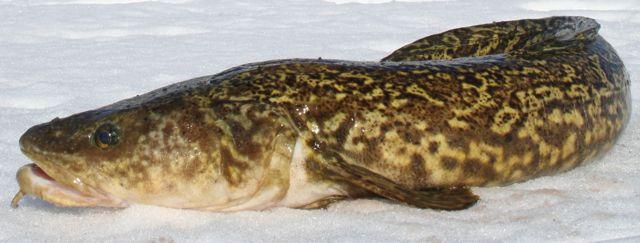
GORD: What are your favourite ice-fishing set-ups and rigs for burbot?
JEFF: If you ice fish for other species, you probably already have everything you need to catch burbot—although not the quality and quantity of fish I expect to catch. Most anglers are shocked when I describe my burbot tactics and lures.
Basically, I jig the same lures I use when ice fishing for walleye, but doubled or tripled in size. For first-ice walleye, for example, I like 1/4-ounce ReelBait Flasher Jigs and ½-ounce ReelBait Fergie Special Jigging Spoons. But for burbot in the same situation, I use a 3/4-ounce Flasher Jig or a 1½-ounce Fergie. Burbot aren’t picky eaters, but you can also help them find your lure. Big lures make noise when they hit the bottom, and displace more water and create more vibration when you jig them.
GORD: How do you tip your Flasher Jigs?
JEFF: For bait, anything meaty will work, including beef heart, salted shiners, fish eyes and scented plastics. But my favourite is steaked ciscoe belly (above). For this, I place a ciscoe on its side and cut all the way through the body following the lateral line. Then I cut off the head, leaving me with three pieces: the head; the majority of the body, including the tail and back; and the U-shaped belly. The belly can now be steaked into about seven ¼-inch-wide pieces. At the bottom of the U in each piece is the ventral midline tendon—this is where you hook the bait onto your jig. In the water, the bait moves enticingly, flashes and gives off scent. It’s true burbot candy!
As for jig colours, glow in any shade is king. The second choice is hot fluorescent colours such as pink, orange and chartreuse. Burbot can see quite well, and a little taunting goes a long way.
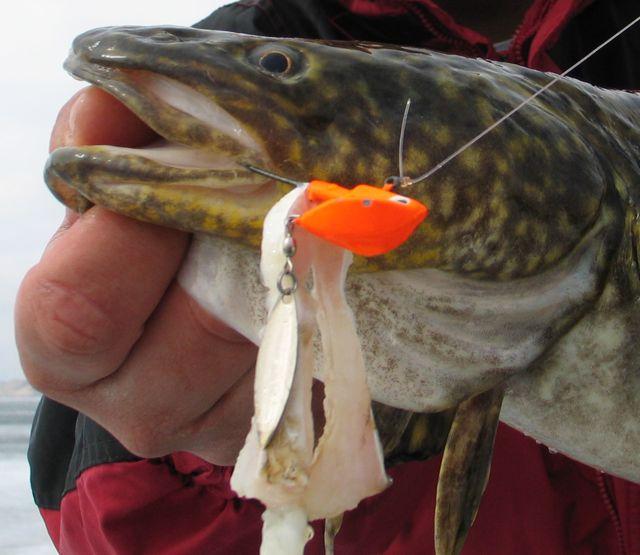
GORD: How exactly do you jig your baits?
JEFF: For burbot, we’re not talking about finesse fishing within six inches of the bottom. I rip the lure as high as I can reach above my head, then let it drop, building up speed before it crashes on the bottom. Depending on the substrate, the collision will make a thud sound and send sand and muck flying, or it will make a whack as it contacts rock. Either way, the trap is set. I follow up with some bottom dancing, then a comfortable pause two feet above the bottom while I watch my sonar for signs of life. If you fish with an underwater camera, continue this overall sequence until you see a fish move in. And once a fish does move in, the bottom dancing or pause will seal the deal.
GORD: What rods, reels and line do you suggest for this technique?
JEFF: To animate these large baits, you need some umph in your rod and reel, so I use the same set-ups for burbot that I do for northern pike and larger walleye. For line, I spool on 20-pound-test Sufix Performance Ice Braid in the Neon Fire colour, adding a four-foot leader of 17- to 20-pound-test Sufix fluorocarbon. I join the line and leader with a barrel swivel, which is useful when landing burbot, as they often bend their bodies and won’t fit through the hole. By grabbing the swivel, you can get a good handle on the fish to patiently wait until it relaxes and slides up the hole.
I use 20 or 30 series spinning reels and two rods that really lend themselves to burbot brawling: HT Enterprises’ 32-inch medium-heavy HT Polar Lite and Rapala’s 42-inch heavy R-Type Ice Rod. The shorter HT rod is perfect for inside an ice shack, while the R-Type is good for running and gunning. They both have the power for solid hooksets, yet they’re soft enough to allow some forgiveness when dealing with a jumpy, rolling fish at the hole.
GORD: When and where do you use tip-ups?
JEFF: You need tip-ups when you’re searching for burbot and gauging their activity levels. When I’m scouting an area, I set out a string of tip-ups, starting in the shallow shoal, down the drop-off and onto the basin flat. Since two lines per angler is the standard for most provinces, you can set out two tip-ups for every angler in your group (be sure to check your local regulations). And setting them up is fast and effective—I use a 3/8-ounce jig and just let it drop to the bottom. That’s right, I drop the tip-up lure down the hole, move on to the next, and the next and so on, then come back and set the flags.
For bait on these do-nothing tip-ups, I prefer chunked ciscoe meat (make sure you keep the hook exposed) or a jumbo salted shiner cut into three pieces and skewered onto the hook. Just be aware that burbot caught on a tip-up are often keeper fish, since they can gobble the lure down deep.
My favourite tip-up is HT’s Polar Therm, which covers the hole and keeps it relatively ice-free while eliminating light. And I spool my tip-up with 30-pound-test Sufix Performance Metered Tip-Up Ice Braid, tied directly to the jig.
GORD: Given that burbot have a great sense of smell, is chumming effective (where legal)?
JEFF: A great sense of smell, indeed! My brother, Jason, and I were once walleye fishing at first-ice, and the burbot were out-competing the walleye for our jigs. I was doing well in one hole using shiner heads on my jig and chumming with the bodies. While unhooking one nice keeper burbot, out of the corner of my eye I saw the water jump in my hole. It was a jumbo burbot plunging in and out, eating the minnow bodies that hadn’t sunk.
The pre-spawn part of the season is the most difficult time to pattern burbot, and chumming an area greatly increases your success. I chum with the ciscoe parts left over from my belly steaks, cutting them into finger-length pieces. If I chum an area before I head home, I expect to immediately catch a sumo burbot stuffed with chum the next morning.
If you’re fortunate enough to fish an area for several days in a row, you’ll find you can slowly pull numbers of burbot into your area for an extended period by chumming cut ciscoe, sardines or shiners. At last ice, however, chumming doesn’t seem to help because the burbot are primarily on the shoal to spawn and ward off egg-stealing ciscoes and perch.
When chumming isn’t an option, you can also shorten your burbot search by using prime, plentiful bait and a powerful scent on your lures—I’ve had consistent success with Pro-Cure Garlic Crawfish Super Gel. It’s deadly on fish, but smells potent, so keep it in a sealable bag.
GORD: Any final thoughts for Outdoor Canada’s readers?
JEFF: Thanks, Gord, for letting me share my passion for the most underrated predator fish in Canadian waters. While they’re not stunningly beautiful, like a brown trout in fall colours, these little-understood fish capture my imagination whenever I cross paths with them on the ice.
Every Friday this winter we’ll be sharing Outdoor Canada’s top ice fishing tips for 2016. Check back regularly to learn about the latest tackle, tips and techniques for icing more walleye, perch, northern pike, lake trout, crappies and whitefish.
PISCATORIAL PROMOTERS
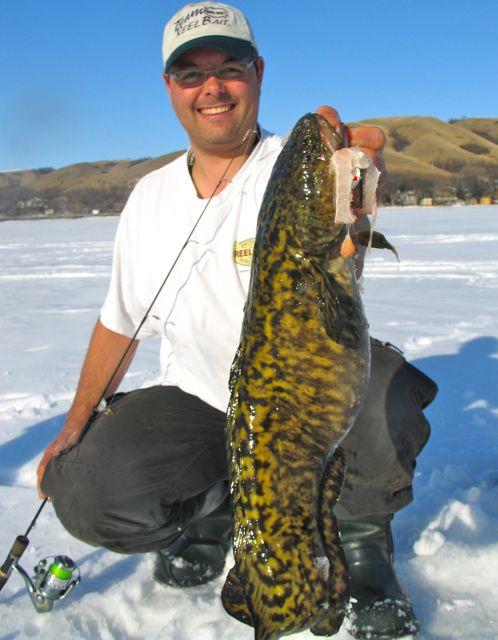
Along with his brother, Jason (above), and 13-year-old son Ben, Jeff Matity owns and operates Matity’s Get Fishing, a multi-media production and outdoor education company aimed at promoting sportfishing. Through videos, sportsmen’s show seminars, in-store appearances, classroom visits and outdoor fishing exhibits, the Saskatchewan trio share their angling knowledge and “passion for fish and the beautiful places they live,” says Matity.

